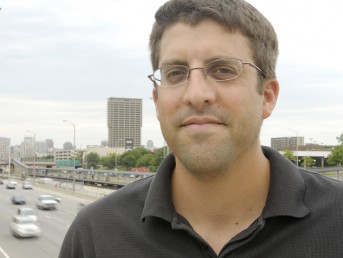Gunshot victims in Cook County ‘under-triaged’ to community hospitals
Only one in six Cook County gunshot patients with injuries serious enough for treatment in a designated trauma center are taken to these specialized hospitals, according to a new report in JAMA Surgery.
The study also found these ‘undertriaged’ patients are more likely to live on the south and west sides of the county.

Lee Friedman, associate professor of environmental and occupational health sciences, UIC School of Public Health
Researchers at the University of Illinois at Chicago School of Public Health looked at firearm-related injuries in Illinois’ most populous county from 2009 through 2013. Inpatient and outpatient cases were analyzed.
Undertriaged patients were those who met the national criteria for transfer to a specialized trauma center but instead were taken to a hospital without one. The criteria are based on severity of the injury and its location, especially between the knees and top of head and from the elbows inward.
During the five years studied, there were nearly 10,000 firearm-related injuries in the county, of which 29 percent were initially treated at non-designated trauma centers, or community hospitals. Of the nearly 5,000 injuries serious enough for treatment at a trauma center, 18 percent were first treated at a non-trauma center, and only 10 percent were transferred to any of the county’s 19 designated trauma centers.
The researchers found that patients treated in non-trauma centers were less likely to die than the patients treated in hospitals with trauma centers.
“This is likely because patients treated in these community-based hospitals have less serious injuries,” said Lee Friedman, associate professor of environmental and occupational health sciences, UIC School of Public Health and corresponding author on the paper.
Friedman said that one of the reasons patients whose injuries meet criteria for treatment at trauma centers aren’t treated at these facilities is because many are transported to the nearest hospital by friends or family.
“Friends and family don’t follow guidelines for who should get transferred to a Level 1 or Level 2 trauma center, only emergency responders are expected to follow these criteria for where to bring and injured patient,” Friedman said. “Additionally, EMS personnel sometimes bypass Level 1 or Level 2 trauma centers because those hospitals have signaled that their emergency departments are currently full. It happens all the time,” Friedman said.
Friedman and his colleagues also found that a higher proportion of patients on the south and west sides of Cook County who met criteria for treatment in a designated trauma center were brought to community hospitals.
South of 99th Street, Friedman said, “there are no trauma centers, and many of the cities have very limited EMS resources. So the fact that many of these residents aren’t treated at a trauma center is not surprising.”
“On the west side of the county, which includes the west side of Chicago, the relatively high number of gunshot patients brought to non-trauma centers can be attributed to the sheer volume of gunshot injuries experienced in that area,” he said.
Friedman said the data suggest that better communication between hospitals with and without specialized trauma teams is needed, so that patients can be swiftly transferred to a higher level of care if necessary.
Dr. Allison Lale and Allison Krajewski of the UIC School of Public Health are co-authors on the paper.
